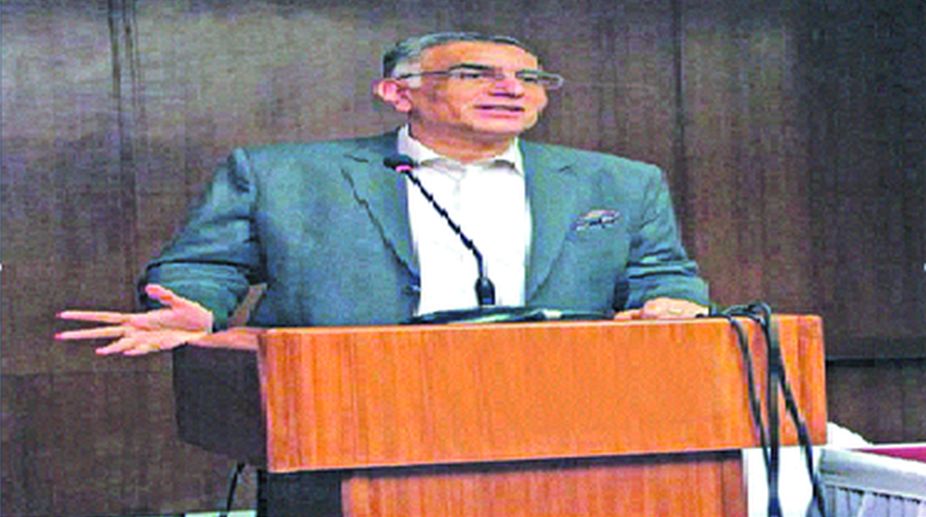What started as a food distribution programme is today a major international humanitarian agency delivering emergency relief and long-term international development projects. Founded in 1945, CARE International (Cooperative for Assistance and Relief Everywhere) has a presence in 80 countries. Four years ago, it made the transition to an India entity, CARE India. The India board operates under the global CARE federation.
Speaking about the organisation’s work, CARE India’s Managing Director and CEO, Rajan Bahadur, elaborated upon the challenges faced in the various sectors, or verticals to ASHA RAMACHANDRAN. Excerpts:
Q: With Prime Minister Narendra Modi stressing on the need to educate the girl child, how is CARE India gearing up?
Advertisement
A: CARE India works under four verticals: health, education, livelihood and disaster preparedness and thereby disaster management. Within this, our focus is on women and the girl child. We are more focused on marginalised communities. We work across 14 states currently and we have a large operation of close to 40 projects. We have changed with the times. What was once for food distribution is a very different organisation now. As I mentioned, our focus is on women and the girl child.
Last year (FY 2015-16), CARE India directly reached out to 1.36 lakh children (52 per cent girls from the most marginalised communities). We also do a lot for education, including the Kasturba Gandhi Balika Vidyalayas (KGBV). We are not just impacting girl child but also training teachers. Most of these are residential programmes.
Udan, a recent programme in Mewat, Haryana, is basically for girls who are school drop-outs and girls who have never been to schools. It’s a 11-month residential programme, where they work and learn with a peer group. So, the girls not just study but also (learn) community living and then we put them into the mainstream.
India is a huge country and there is so much differentiation between girls and boys. The basic DNA of CARE India is to make sure that we work at school level and also make a difference to the community. We build capability and capacity to bring that change.
Q: Despite several policy measures, the plight of women and their safety appears to have improved little. Your comments.
A: Protection of Women against Domestic Violence Act, 2005, is important. But we as an organisation would work on a platform which is more at ground level. So we would work with girls ad women to bring in that social change and a cultural change.
There is a difference between equality and equity. Say, in a family, food is never equally distributed. Normally it happens that the housewife gets the least. And when she is expecting, instead of getting more than her due, she continues to get less. Yet she is doing the maximum amount of work. So, I think a lot needs to be done in terms of how women and their roles are accepted in society.
CARE India works a lot with creating self-help groups (SHGs). Today there are people who have not stepped out of their houses and are running small businesses. These women are negotiating with banks.
We work with men as well and it’s worked wonderfully. So, men are also sensitised. But the basic thing is you can protect women against violence. Unless the men are sensitised, unless the household is sensitised too … there has to be a consensual (move).
The other thing is, when women become earning members, their respect within their families goes up ~ their acceptance, their dependence, all of that changes. The husband and the in-laws are supportive. They know there’s money coming in and because of money there is hygiene and better nutrition. We strongly believe that if a woman is empowered and has got the capacity, she makes a far greater difference for there’s a ripple effect around her. We work a lot with boys and men as well. Unless we arrest the underlying cause of the problem ~ some of these are unequal power relations ~ we will never be able to create a level playing field.
Q: Women are also getting skills in negotiating and marketing, which were traditionally held by men?
A: Of course. We have various projects on skill building. Then there are related cycles of confidence levels. When the women are empowered, they make sure that what they couldn’t get, like education, their children will get them.
Q: Are there any changes needed in government policy and the law to meet needs of women?
A: Government is doing a lot. But the nature of the business is so large that a lot more needs to be done. They seem to be moving in the right direction. But it will take time. You can keep on criticising the Swachh Bharat Abhiyan or the Beti Bachao, Beti Padhao programmes. But they need time to gather momentum. Yes, more can be done. We (CARE India) are playing a far greater role. Government itself is very serious about this, which is a good thing.
Q: Can you throw some light on CARE's new models of public-private partnership and livelihood in the rural area?
A: Whether it’s land rights or agri-farming, we will work on that. These are important to us because these are marginalised tribal communities. And again, while our focus is women and girl child, it’s not like we don’t work with men. In fact, at the grassroots level, there has to be connectivity. You can’t be segregating one from the other. It actually works well when they have each other’s support.
Q: What are your views on PPP?
A: There are different ways of looking at it. CARE India works with the Centre, the state governments, with corporates, public sector companies and other NGOs. We help build the capacities of smaller NGOs. There may be areas during disasters where we are not present. We would then reach out to those with whom we already have an MoU, so that we can step in at any point of time and start working.
Q:. Turning to another major area of CARE India's work, disaster management, given India's strides in this sector, do you think the country is geared up to meet any eventuality?
A: About 10-15 years ago, we could almost predict that say in UP during monsoons, certain areas would get flooded. Today, you can’t predict. Whether you attribute it to climate change, population expansion, or whatever, every month there is some disaster. Who could imagine Hyderabad or Chennai getting flooded? And flood means not just rainwater but crazy floods. So, I think things are changing.
When there’s a disaster, government agencies are sometimes dependent on organisations like us. What really counts is the human element. Everything else is secondary and everybody is on a level playing field.
After the tsunami and the Mumbai terrorist attack, there was a lot of learning. It was not that people did not know it earlier but nobody realised the magnitude. I’m sure that as an organisation, as an economy and as a government, we are far better prepared today.
Q: What is CARE India's role in disaster management and mitigation?
A: We work at two levels: disaster relief and, before that, with communities for disaster preparedness, how to anticipate and how to build more resilient homes and so on. It’s like a fire drill ~ prepare people how to go about it.
The writer is the Managing Director and CEO of CARE, India.











